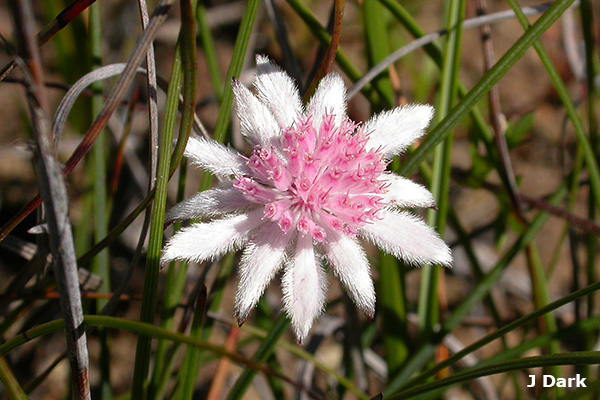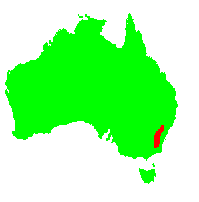General Description:
Actinotus is a small genus of about 20 species most of which occur in Australia but there are 2 or 3 species native to New Zealand. Actinotus helianthi is the best known member of the genus and it has been in cultivation for many years.
Although of fairly widespread distribution, pink flannel flower is rarely seen in the wild as it does not appear every year. Apparently it requires specific climatic conditions for seed stored in the soil to germinate. It is reported that it flowers for one season a year after a fire if there has been rain.
Like its more common relative, Actinotus helianthi, A.forthythii is a herbaceous, wiry plant with deeply lobed leaves which are grey and velvety in nature. The plant and flower heads are considerably smaller than A.helianthi but larger than A.minor, the ‘lesser flannel flower’. The overall appearance of each head of flowers is similar to a daisy which is really a cluster of little flowers, with separate male and female flowers surrounded by velvety, “petal-like” bracts. In the pink flannel flower the central flowers are a deepish pink and the ‘petals’ are a very pale pink.
Flowering, when it occurs, is usually in summer or occasionally in spring. Flowering is followed by fluffy seeds in a globular head. The seeds are dispersed by breezes.
A.forsythii is rarely cultivated due, no doubt to the unavailability of seed. It is likely to have very specific requirements for cultivation and would probably require well drained, sandy soils in sun or partial shade. A.helianthi will often “self-sow” so it is possible that A.forsythii would do likewise.
Propagation from cuttings would probably be reasonably successful, based on experience with A.helianthi. Cuttings should not be put under mist as the hairy foliage is likely to rot. Propagation from seed is untested.

Flowers of Actinotus forsythii
Photo: Jill Dark

Habitat of Actinotus forsythii
Photos: Jill Dark
 Australian Native Plants Society (Australia)
Australian Native Plants Society (Australia)













